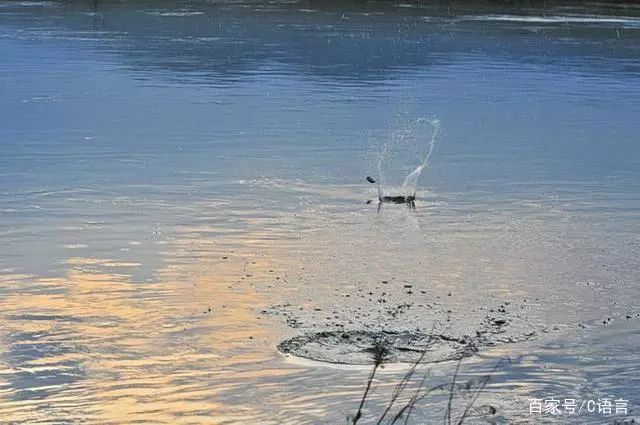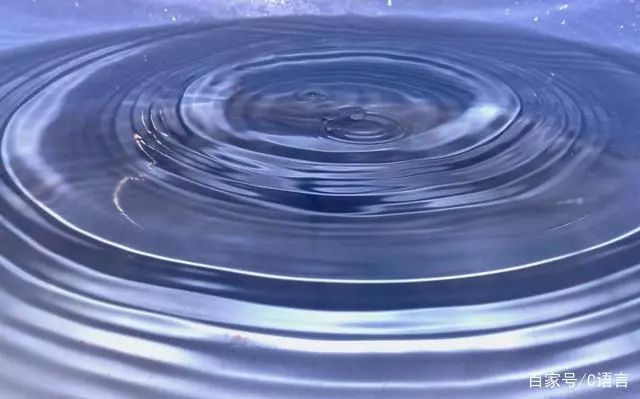C语言项目:水波纹效果实现
今天教大家一个比较简单的C语言程序,通过用easyx库实现的水波纹效果。说到这里可能大家对水波纹似懂非懂,那么你肯定玩过这游戏吧!
编辑
打水漂
我们捡一块扁平的小石头或者瓦片,角度稍微倾斜的甩出去,在力的作用力下,会带起一连串往外扩散的水圈,这就是水波纹,我们就来先看下水波纹吧!
编辑
水波纹
很直观的就能看出来了,如果大家想看的话也可以自己动手玩玩,装一杯子水,然后往杯子里滴水,就能看到水滴入杯子中带起的水波纹啦!
那么我们今天就是用水波纹的效果来实现今天的小项目!
编辑
镜花水月
大家可以从图片上看得出来,在右上角有一个很明显的水波纹,这是通过鼠标的点击产生的!
(没有上传视频,不然效果更美!)
当然了你也可以360度无死角的画圈玩水花,妈妈再也不用担心我玩水了o(∩_∩)o !
好了 ,我们接下来看下程序的源代码:
#include
#include
#include
#define PIC_HEIGHT 600
#define PIC_WIDTH 800
void FrameFun();// 帧逻辑函数,处理每一帧的逻辑
void RenderFun();// 帧渲染函数,输出每一帧到显示设备
IMAGE src_img;// 原位图
IMAGE dest_img(PIC_WIDTH, PIC_HEIGHT);// 处理后显示的位图
DWORD *img_ptr1;// 原图片片内存指针
DWORD *img_ptr2;// 处理后显示的位图内存指针
// 以下两个 buf 为每一个点的波幅,前者为当前波幅,后者为下一个时刻的波幅。
short *buf = new short[PIC_HEIGHT*PIC_WIDTH + PIC_WIDTH];
short *buf2 = new short[PIC_HEIGHT*PIC_WIDTH + PIC_WIDTH];
void main()
{
// 初始化设备,加载图片
initgraph(PIC_WIDTH, PIC_HEIGHT);
SetWindowText(GetHWnd(), "水波纹效果");
loadimage(&src_img,"water.jpg");// 加载图片,大小:800*600
setbkmode(TRANSPARENT);
settextcolor(BLACK);
setfont(25, 0, "Arial");
// 获得内存指针
img_ptr1 = GetImageBuffer(&src_img);
img_ptr2 = GetImageBuffer(&dest_img);
// 初始化波幅数组
memset(buf, 0, (PIC_HEIGHT*PIC_WIDTH + PIC_WIDTH) * sizeof(short));
memset(buf2, 0, (PIC_HEIGHT*PIC_WIDTH + PIC_WIDTH) * sizeof(short));
// Let's Go!
BeginBatchDraw();// 双缓冲,闪屏时需要
while (true)
{
FrameFun();
RenderFun();
FlushBatchDraw();
Sleep(1);
}
EndBatchDraw();
}
// 计算出下一个时刻所有点的波幅
void nextFrame()
{
for (int i = PIC_WIDTH; i < PIC_HEIGHT*(PIC_WIDTH - 1); i++)
{
// 公式:X0'= (X1+X2+X3+X4) / 2 - X0
buf2[i] = ((buf[i - PIC_WIDTH] + buf[i + PIC_WIDTH] + buf[i - 1] + buf[i + 1]) >> 1) - buf2[i];
// 波能衰减
buf2[i] -= buf2[i] >> 5;
}
short *ptmp = buf;
buf = buf2;
buf2 = ptmp;
}
// 处理当前时刻波幅影响之后的位图,保存在 dest_img 中
void RenderRipple()
{
int i = 0;
for (int y = 0; y < PIC_HEIGHT; y++)
{
for (int x = 0; x < PIC_WIDTH; x++)
{
short data = 1024 - buf[i];
// 偏移
int a = ((x - PIC_WIDTH / 2) * data / 1024) + PIC_WIDTH / 2;
int b = ((y - PIC_HEIGHT / 2) * data / 1024) + PIC_HEIGHT / 2;
// 边界处理
if (a >= PIC_WIDTH)a = PIC_WIDTH - 1;
if (a < 0)a = 0;
if (b >= PIC_HEIGHT)b = PIC_HEIGHT - 1;
if (b < 0)b = 0;
// 处理偏移
img_ptr2[i] = img_ptr1[a + (b * PIC_WIDTH)];
i++;
}
}
}
// 鼠标模拟投石头
// 参数说明:
// (x, y): 鼠标坐标
// stonesize: “石头”的大小
// stoneweight: 投“石头”的力度
// Ps: 如果产生错误,一般就是数组越界所致,请酌情调整“石头”的大小和“石头”的力度
void disturb(int x, int y, int stonesize, int stoneweight)
{
// 突破边界不处理
if ((x >= PIC_WIDTH - stonesize) ||
(x < stonesize) ||
(y >= PIC_HEIGHT - stonesize) ||
(y < stonesize))
return;
for (int posx = x - stonesize; posx
{
for (int posy = y - stonesize; posy
{
if ((posx - x)*(posx - x) + (posy - y)*(posy - y) < stonesize*stonesize)
{
buf[PIC_WIDTH*posy + posx] += stoneweight;
}
}
}
}
// 计算fps
float getFps()
{
#define FPS_COUNT 8
static int i = 0;
static int oldTime = GetTickCount();
static float fps;
if (i > FPS_COUNT)
{
i = 0;
int newTime = GetTickCount();
int elapsedTime = newTime - oldTime;
fps = FPS_COUNT / (elapsedTime / 1000.0f);
oldTime = newTime;
}
i++;
return fps;
}
// 渲染
void RenderFun()
{
RenderRipple();
putimage(0, 0, &dest_img);
char s[5];
wsprintf(s, "%.1f", getFps());
outtextxy(0, 0, s);
}
// 逻辑
void FrameFun()
{
// 鼠标
if (MouseHit())
{
MOUSEMSG msg = GetMouseMsg();
if (msg.uMsg == WM_MOUSEMOVE)
{
disturb(msg.x, msg.y, 3, 256);
}
else if (msg.uMsg == WM_LBUTTONDOWN)
{
disturb(msg.x, msg.y, 3, 2560);
}
FlushMouseMsgBuffer();
}
// 计算下一帧的波幅
nextFrame();
}
这就是全部的源代码了,如果另外如果没有安装easyx图形库是不可以使用的呢!
下面是素材图:
编辑
素材图
注:素材图需要修改名字为water,并且是jpg格式的才可以的哦!
喜欢的小伙伴多多转发关注哦!
想学习C/C++的朋友可以关注公众号【轻松学C语言】
点击原文链接获取C/C++ 课程听课学习链接!!!



